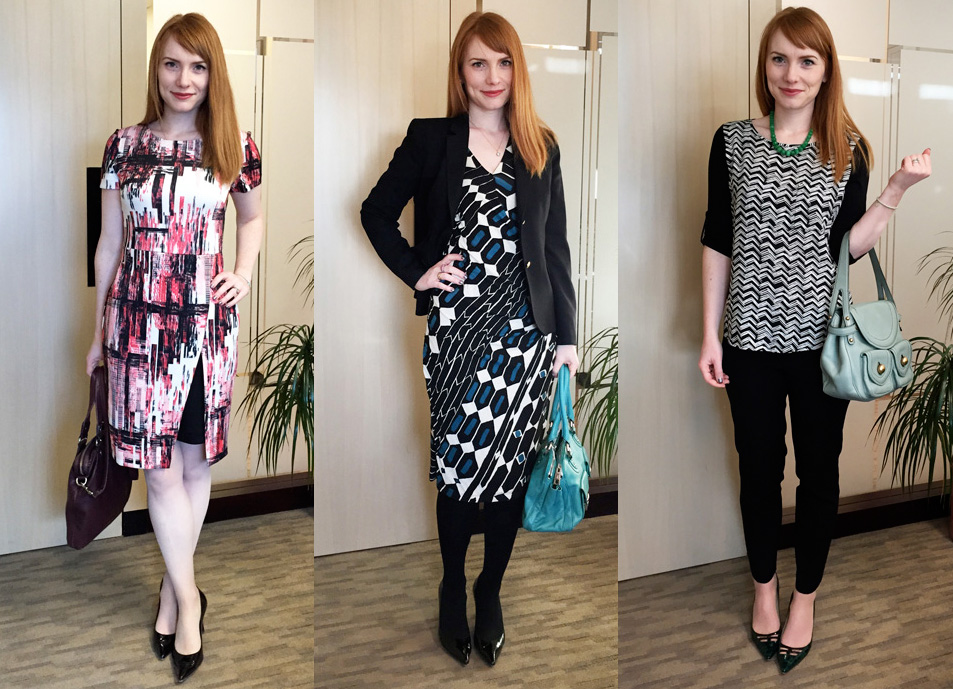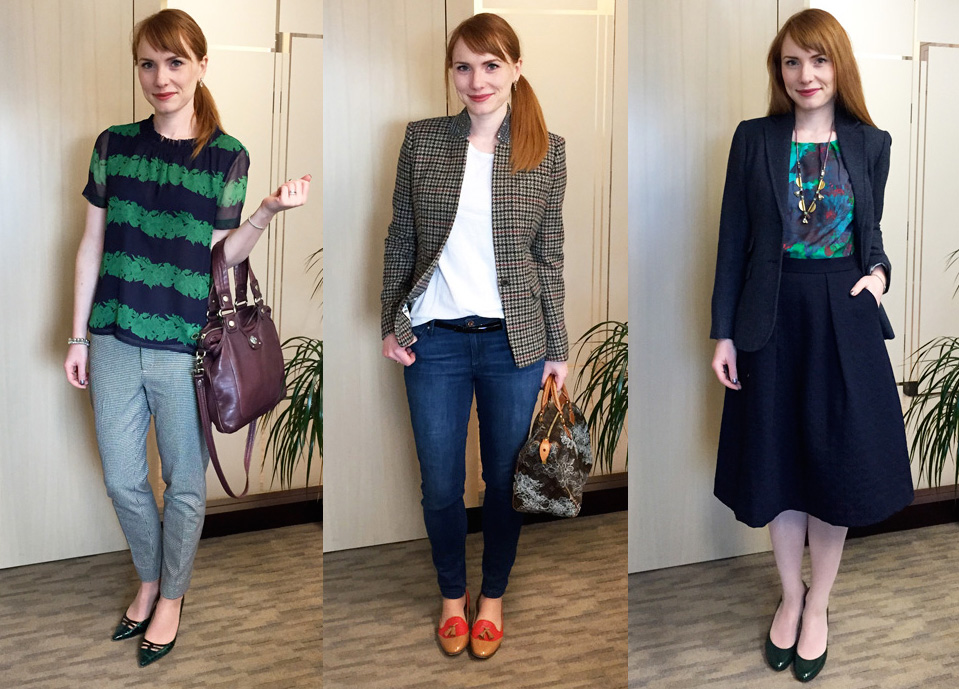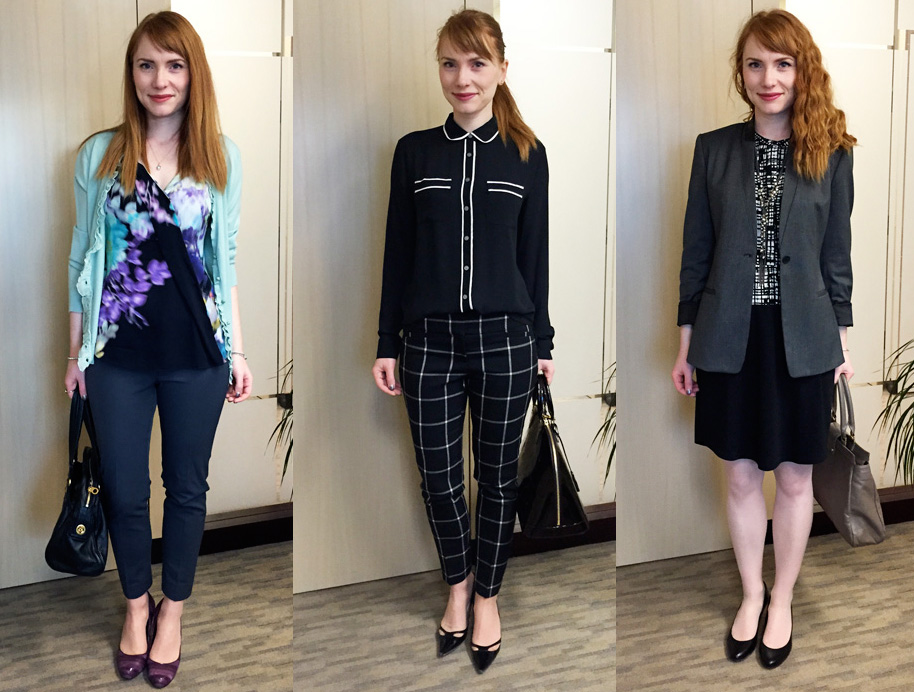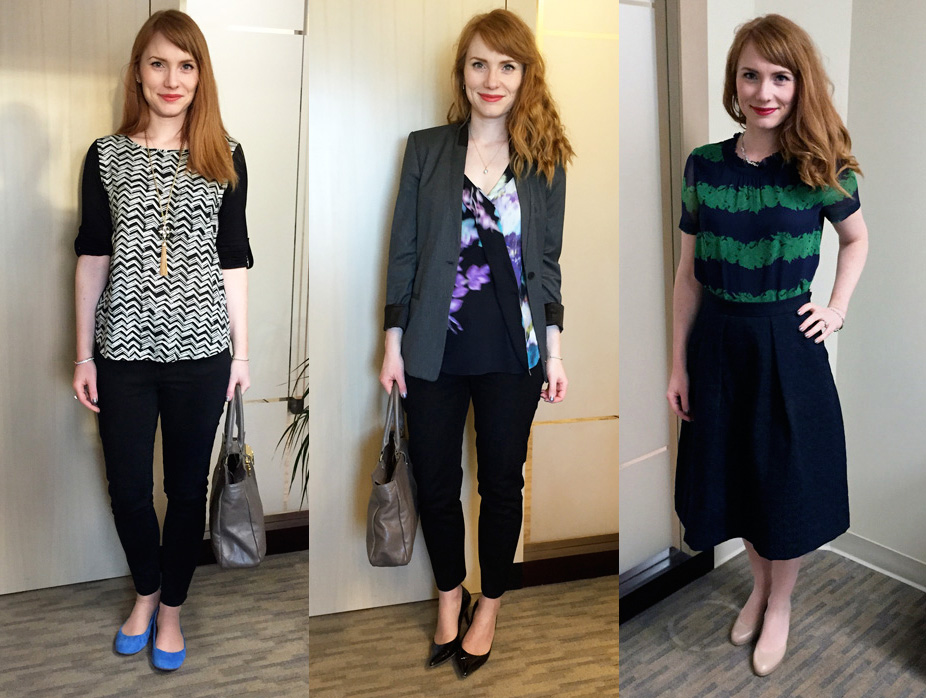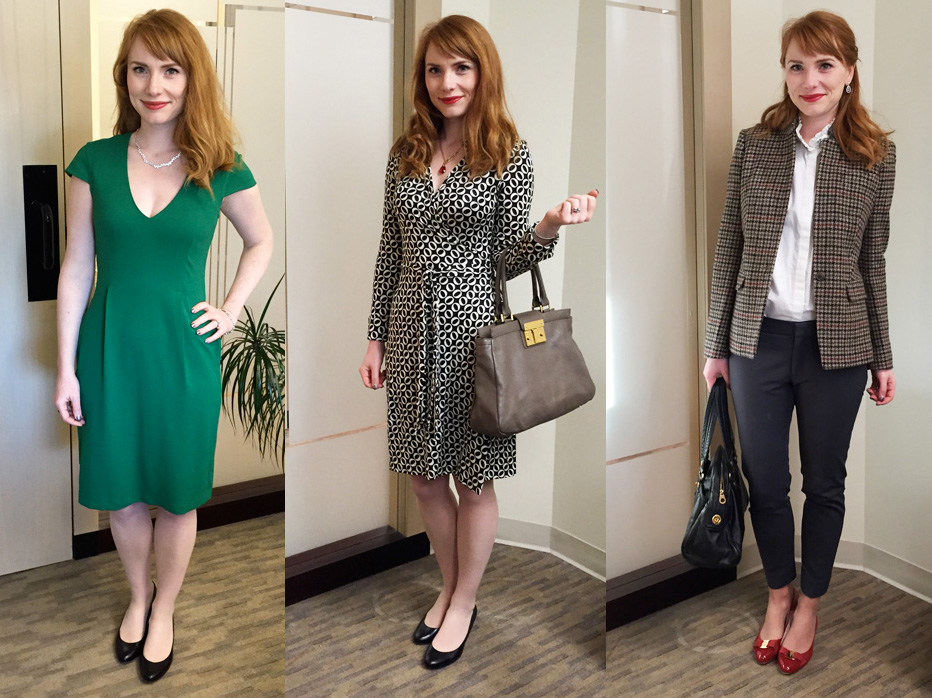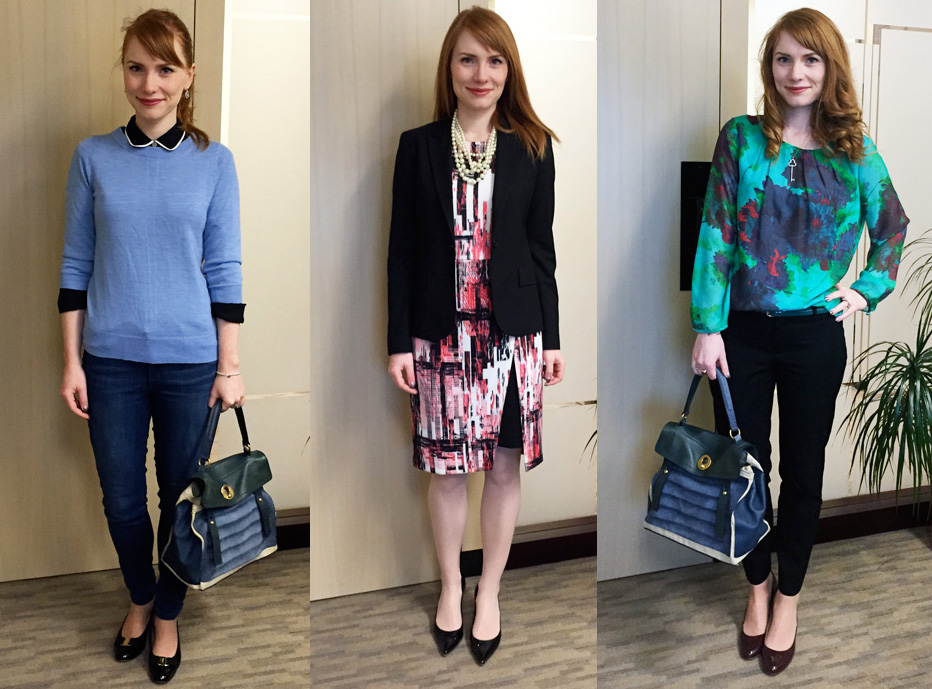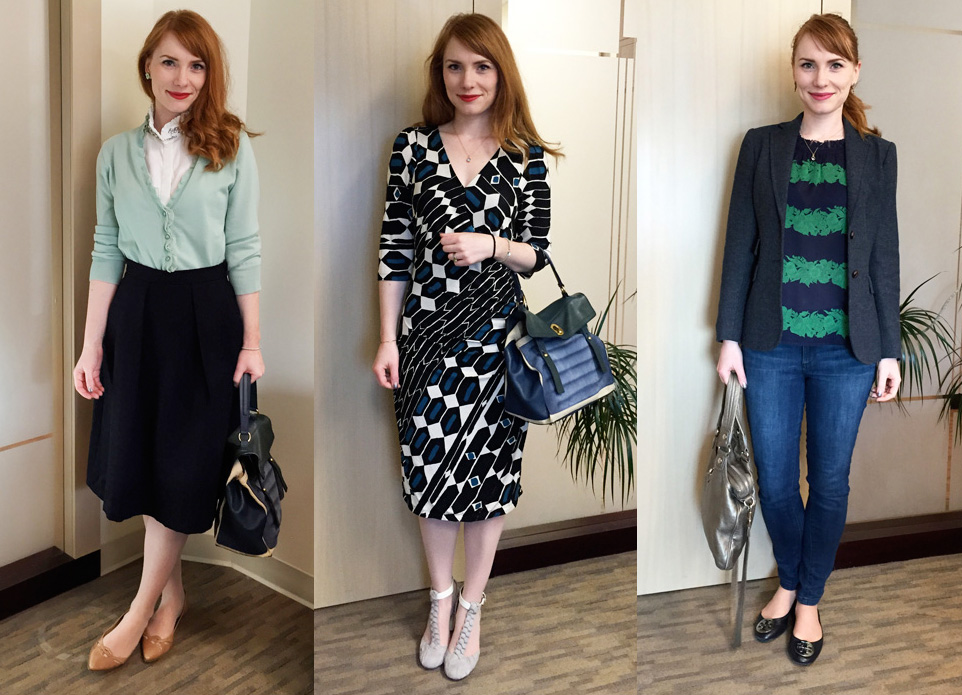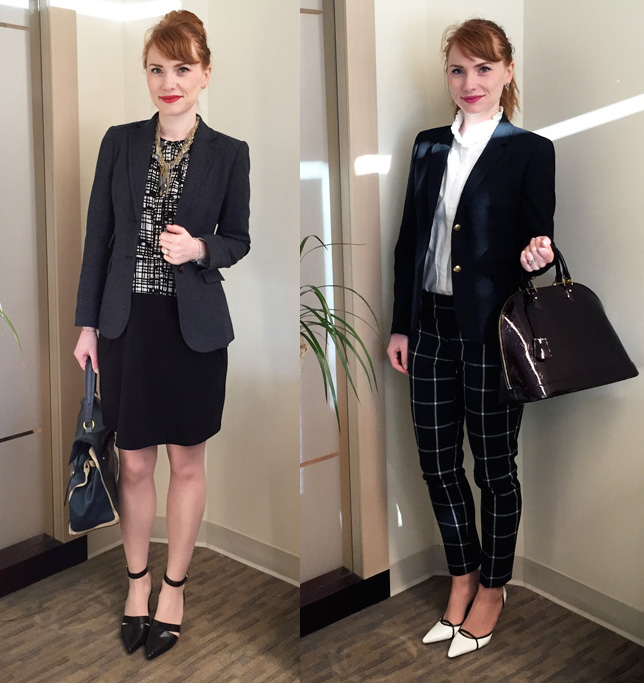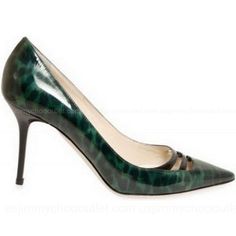I haven’t been reading much lately, which is a crying shame, but one of the things I did read last month was Schiaparelli and Prada: Impossible Conversations. Essentially, it’s a glorified coffee book that was released in conjunction with the Metropolitan Museum of Art’s exhibition of the same name, which “explore[d] how Elsa Schiaparelli and Miuccia Prada changed fashion over the last ninety years by challenging accepted norms.”
The format of the book (and exhibition) was inspired by the Vanity Fair feature called “Impossible Conversations”, which has featured such odd celebrity pairs as Sigmund Freud and Jean Harlow engaged in, well, imaginary conversations. The book features photographs of both designers’ pieces – contrasted to show striking similarities, and divergences – and their thoughts on their aesthetic, approach to design, and various style-related topics. Schiaparelli’s portion of the “conversation” comprises excerpts from her autobiography, Shocking Life; Prada’s presumably comprises interview quotes (it’s not clear if she was interviewed specifically for the book, and asked to respond to the Schiaparelli quotations, or whether this is material gathered from a number of sources). There isn’t a ton of substance to the book, to be honest, which is a shame, because both women seem to have had very interesting lives. The Preface gives you a taste of it, but it’s altogether too short. I’m not necessarily a huge fan of Prada’s design aesthetic, although I am drawn to/intrigued by the way the book defines her design sensibilities and inspiration:
“Saint Laurent’s costumes for Deneuve’s character [in Belle du Jour], Severine, a society woman slumming in a brothel, are the beginning of “Prada”. Her collections, like Bunuel’s films, are the chapters of a sly parable about the discreet charms and secret perversities of bourgeois society. But here, too, Prada rejects an archaic paradigm. Bunuel’s Severine is a frigid housewife seeking transcendence via sadomasochism in the arms of repulsive strangers. Prada’s Severine (who might be a gallerist or a surgeon) dons a mask of impeccability to recruit a lover or a playmate who can see through it. There is always a subtle clue – something odd or off-kilter – about her neat little skirt and her tailored shirt buttoned at the collar; but it isn’t her virtue that’s a lie, it’s her passivity.”
Anyway, it’s not the photos that are the highlight of the book, in my opinion, but the interesting morsels hidden in the “conversations” themselves. These ones, under the heading “Naif Chic” caught my attention in particular:
MP: Women always try to tame themselves as they get older, but the ones who look best are often a bit wilder. Thinking about age all the time is the biggest prison women can make for themselves.
ES: Ninety per cent [of women] are afraid of being conspicuous and of what people will say. So they buy a grey suit. They should dare to be different. Although I am very shy (and nobody will believe it), so shy that the simple necessity of saying “Hello” sometimes makes me turn icy cold, I have never been shy of appearing in public in the most fantastic and personal get up.
As you know, I’ve been thinking a lot lately about the interplay between my age, my career, and my personal style – how the latter can or should or must change to reflect the demands of the others – so these quotes struck a nerve. My first reaction was “Yes! Absolutely!”, but my enthusiasm was quickly tempered. In the abstract, I agree absolutely that women should not allow themselves to be defined by others according to their age, especially if that means being minimized, or made invisible. I also agree that women should not be afraid of standing out – drawing attention to themselves, having a voice and demanding to be heard – any more than men would think of doing. But in business, and especially in the upper eschelons of conservative business, all of that becomes more complicated.
In most conservative professions, age denotes seniority, demands respect. I have male colleagues who looked upon the early onset of gray hair as a bit of a boon; it conferred a certain measure of gravitas that, in a competitive environment, gave them a little added edge. I don’t know if gray hair on a woman has the same effect; looking too young is definitely a hindrance, but looking just plain old is not much help either. I think women are best served by achieving what is a difficult balance: looking mature (and, therefore, competent and experienced) but ageless, in a sort of effortless way.
At the same time, style is seen as a sort of frivolous thing. I think that attitude is slowly changing, but it isn’t going anywhere just yet. (I hasten to add that, in this regard at least, I don’t think that women get a worse or different rap than men. If anything, men usually get the short end of the stick when it comes to dress codes.) A perceived preoccupation with clothes often connotes a lack of seriousness; this might seem silly or unfair, but it cannot be simply disregarded – not without running the risk that your professional standing, especially in the eyes of your superiors or clients, will suffer for it. Where age and style intersect is especially tricky territory, because there is so much subtext to keep straight. Moreover, clothes are a perfect medium through which to convey messages about yourself, but above all, you can’t be seen to be trying too hard; the medium can never be more important than the message, and it certainly cannot be the message (sorry, Marshall McLuhan).
I think that one way in which women (and men) can overcome the traditional strictures on sartorial self-expression in the business world is by being really, really, really good at something not many others can do. Success has its privileges, you know? And success often comes with experience, and therefore age. Which brings us back, full-circle, to where we started. Some day, it might be fun to be an eccentric old lady; for now, I’m still struggling to figure out how much self-expression I want to put into my sartorial choices at work … and how much I should.
Obviously, I am writing this from a very specific perspective, based on my own experiences; I would love to hear your thoughts on the intersection of age, style, and career.

